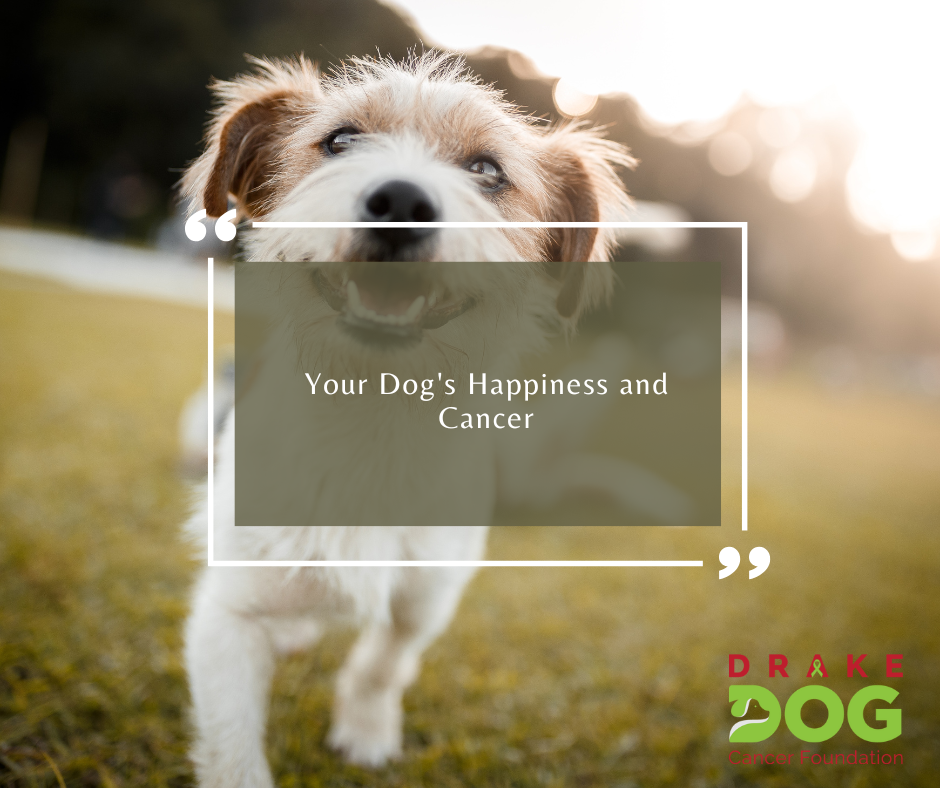Dogs with cancer should still exercise. Exercise helps physical and mental health. It can help eliminate or reduce stress. Exercise may also help to build or maintain muscle that has been affected or deteriorated from the cancer.
Sleep is also key here. Exercise helps dogs sleep significantly better at night (since it gives them increased melatonin levels). Plus, the sunshine helps the body maintain vitamin D production.
Even if your dog can no longer take walks around the block or run to the park with you, exercise can be encouraged by simply walking around the house or hanging out in the back yard.

Some dogs have limited mobility; we’ll address that, too. Dogs with reduced mobility can still do a few activities to increase circulation and improve mental/physical health. If your dog needs assisted movement, you can help her get around by placing a towel underneath her belly. Guide her as she walks.
Dogs who are limited may also benefit from physical therapy. An increase in blood flow throughout the body can help with stiffness in the limbs and/or joint pain.
If your dog is completely immobile, grooming offers a way to increase circulation through the body. Brushing her with a soft-bristled brush stimulates the skin. It’s also relaxing, to say the least.
Play Dates for Dogs
Dogs who are mobile enough to walk, run, or even jump can benefit from playdates with other dogs. Dogs are social mammals similar to us. There are some dogs (just like people) who like to keep to themselves and aren’t keen on socialization, but there are others who crave social activities.
Just as with a completely healthy dog, you want to make sure you find a dog (or dogs) who are compatible with yours to make this a fun time. For example, a dog who has limited mobility but can still walk isn’t going to want to play with an energetic dog in most cases.
If your dog is one who likes people more than other dogs, that can also be a method of socialization. Invite some friends and family over for dinner; let them cuddle your dog if she is interested.
Meditation with Your Dog
Meditation is well-known for being beneficial to health and happiness. Fitting it into your cancer regimen can be incredibly helpful to both you and your dog. This gives both of you a little extra time to bond, relax, and re-energize.

Focus on Your Breathing
The main focus in meditation involves breathing. Of course, breathing is involuntary, but when you’re meditating you want to focus on how many breaths you are taking. Put on some calming classical music, and get into a calm state of relaxation. If you have an essential oils diffuser, this would be a good time to turn it on. Get some lavender in the air.
Breathe slowly and calmly. In through the nose and out through the mouth. Bring your mind to a happy place. Visualize the goals you have set along the cancer journey. Goals you have set for your dog. Goals you have set for yourself.
Don’t Aim for Perfection
Don’t aim for perfection, especially in your first meditation with your dog. There may be a few distractions; your dog might not want to stay right there for the whole time. That’s okay. Understanding your dog’s body language will help you decide when it’s a good time to start meditating.
Meditation may sound a bit silly at first, but what’s it hurt to give it a try? You may find your body energized and your mind clearer even after your first session together.
Read more:
5 Reasons You Should Meditate With Your Pet
